|
Recently I wrote a post about Despair in contemporary film and noted it was the longer post I'd ever write. Ha, ha. It only seems like there hasn't been much going on on the blog of late. Things have been brewing in a major way. You didn't think you'd be reading graduate-level analysis of pulpy movies when you got up this morning... but isn't that kind of exciting? Because what I'm writing about here isn't actually the films, but the ideas. It's called the View from Nathan's Bus, after all... How do we choose to see the world, and how important is the role of optimism and belief in better things? I never guessed Tarantino's filmography would be such a good starting place for such thoughts. After writing this paper, though, I can't think of a better one. Here goes, and like last time I wrote a film paper this big, here's a PDF, complete with all the friendly pictures:
Once Upon a Time... in Dreams: On Tarantino, Violence, and Transcendence An Analysis in Um Okay, Seven Parts Tasteful isn't a designation often applied to Quentin Tarantino's work. Perhaps it should be– and especially in the case of his latest and perhaps best feature. I sat through the end credits reflecting and pondering, as I do for every film I see, surprised by how profoundly touched I was. I admire the Tarantino-verse, but I do not expect to be emotionally moved by it. I enjoy his films in spite of their violence, not because of it; his technique, writerly flair, deep appreciation and knowledge of film history, commitment to shooting on film, and singular directorial voice are objectively great, and offer a rhythm and enthusiasm that exists nowhere outside of his pictures. These elements of his work have been discussed in depth elsewhere. What generally isn't discussed, however, is also what's on full display in Once Upon a Time…in Hollywood, and what elevates it above his other work. Quentin's writing is altogether more thoughtful and carefully constructed than people give him credit for. His films satisfy juvenile impulses, and intelligent viewers and critics often stop there, thinking there's nothing beyond the surface to analyze. There is a lot more, and never moreso than in his latest effort. 1. On Awakenings I've been following Tarantino's career for a while now with an eye towards his gradually shifting attitudes on violence. It's shortsighted to conclude simply that all his pictures are violent. There's more going on here. He's been building toward something, wrestling with it as the decades pass by. Let's consider the pictures in order (copious spoilers abound): In Reservoir and Pulp, violence is present, but mostly offscreen. You don't see Marvin's head explode in the backseat; you don't need to. You get it all from John Travolta's reaction. You don't see the hypodermic needle go into Uma Thurman's chest; we cut to her face as she comes to. You think you see that ear being cut off on Reservoir, but you really don't. You see reactions. You see the power of a wide shot, of editing, of Madsen's perverse performance. He's the most repulsive thing on screen in that moment, not the mechanics of blood and severed flesh, and Quentin knows that. Thematically, the two pictures offer different but complimentary ruminations on survival. In Reservoir, we watch a collection of masculine archetypes struggling to survive. There's the loyal man, the man of the law, the man of principle, the apathetic man, the man of integrity, the juvenile men, and the wily, feminine man. It's the man with the most feminine character who makes it out alive; of all the hypermasculine norms presented, it's the man who is least masculine, who is most balanced, who will endure. Moral Survival Pulp offers three variations on the same theme. Here, physical survival is only part of the concern; moral survival becomes the dominant component. What is moral survival? Moral survival is when you're happy with your actions as an ethical being, and where that is of enough importance that moral survival should outlast, or be prioritized over, physical survival. Each of the three story strands in Pulp centers on a character having a moral awakening. Tarantino doesn't comment on the competition between these two survivals (plenty of other films do), but instead gives emphasis to the exploration of ethical epiphanies and characters who come to define themselves by these epiphanies. John Travolta's character's guiding principle is to avoid sleeping with Marsellus Wallace's wife Mia. His monologue to himself about infidelity is given time and weight. Travolta's glamorous heroin adventure ends in disaster, and he further devotes himself to keeping Mia alive, coming to be defined by his allegiance to principle. As often happens in this crazy world of ours, he dies for unrelated reasons, possibly because he predisposes Bruce Willis toward disliking him by antagonizing Bruce earlier on. Bruce Willis's own moral awakening is the most extreme and demonstrative. In linear chronology, this makes sense, as it's the last event to take place in the film's timeline ("Zed's dead, baby. Zed's dead" being the last line spoken, chronologically speaking). Willis saves himself from imminent rape and torture, and finds himself free to escape– but is stayed by his conscience. Generally, film scenes depicting situations wherein characters escape danger only to reenter it because of principle often end badly, implying that behaving on principle is a mistake. Not so here. Bruce Willis returns to the scene of danger to save, of all people, his mortal enemy Marsellus Wallace (Ving Rhames). Willis knows Wallace is now being violated by the very rapists he escaped, and the fact that he could do something about it gnaws at his spirit. Moral survival is worth the risk. And Perchance to Dream… Interestingly, only men get raped onscreen in Tarantino films; perhaps he abides by the dictum I've taken to, which is that there is never a narrative justification for showing a woman being raped onscreen. Also worth mentioning is Tarantino's extremely low opinion of the Confederate South. "I actually consider the Confederacy the equivalent of the Nazi party and I’ve felt that way for a very long time, and America is finally catching up with how I have always felt about the rebel flag," he told Sight & Sound in 2015. It isn't just that only men get raped in Tarantino pictures, if at all; except Wallace, only Confederate, slavery-supporting racist white men get raped in his universe. In keeping with this, the goons Willis and Rhames ably dispatch are just such sorts, and the whole episode functions as a metaphor for slavery in the American South– the violation of the black man on a populational scale– and what Quentin wishes could've been done about it. This is the first inkling in Tarantino's oeuvre of the thirst-quenching power of cinema to revise, to dream. But more on that later. Willis's moral awakening ends well for him, as he and Rhames come to a peace agreement entirely at odds with their earlier antagonism. They're different people now, thanks to the power of a kind gesture. Sam Jackson's moral awakening closes the picture, and like Travolta's, comes to define who he is. In Jackson's case, he witnesses what he perceives to be a miracle, and it compels him to reconsider violence as a defining identity characteristic. In light of the trajectory of Tarantino's career at large, it isn't surprising that this epiphany concludes the film. Jackie Brown, initially dismissed as "minor Tarantino" (itself an odd designation in such a small filmography, especially in 1997), now stands as the most clear anticipatory signal of where Tarantino would end up with Once Upon: older characters reflecting on aging and identity, who are involved in violence but not defined by it. 2. Garnishes and Synecdoches Kill Bill is really where Tarantino takes off, in my view. It marks the beginning of his creative partnership with Robert Richardson, ace cinematographer and veteran of Oliver Stone and Martin Scorsese, most identifiable by his hard, hot top-lighting and acrobatic fluidity of camera movement. QT's preceding films are adroit pieces of writing, but they lack visual flair. Writer-director work doesn't always excel in both the writing and the visual departments (Allen, Linklater), but the Tarantino-Richardson collaborations are bona fide visual and literary feasts. It isn't just Richardson's attention to light, either; compositions are a director's responsibility, and Quentin's mise-en-scene has flowered with age, beginning with Kill Bill's capable handling of a multitude of styles. Kill Bill also marks a shift in the modus of violence from the earlier films. It is no longer offscreen, and has now grown as a preoccupation for the director. Bill, the revenge saga of a woman whose former lover left her and her unborn child for dead (Sharon Tate if she had survived, if you will), is a tale of self-realization through extreme violence. Extreme violence that, as the narrative progresses, becomes gradually less so, until we are left with the climactic anticlimax of violence that has transcended itself– the gory mayhem from two hours ago is now Bill's melancholic fifth step on the grass, a bloodless but all the more potent denouement, as we recall that emotional pain always hurts more than physical pain. The Dichotomy Violence is a garnish for Tarantino; it's window dressing for other themes. It's important to remember that he separates movie violence from actual violence. In 1994 he told The Observer, “If you ask me how I feel about violence in real life, well, I have a lot of feelings about it. It's one of the worst aspects of America. […] Violence in real life is terrible; violence in movies can be cool. It's just another colour to work with.” I suspect this separation stems from the low-rent genre fare he lovingly adores. The violence in those films is indeed hard to compare to real-life pain. Quentin’s films have antecedents not in life, but in movies. He didn’t grow up traumatized on the streets, but devouring R-rated movies in the working-class comfort of Torrance and Harbor City. Like most Americans, his primary experience with violence is likely from media, and it probably defines his comprehension of it when it happens to him in real life, rather than the other way around (this is the part of the essay where I don't know what I'm talking about. If you're reading this, QT, feel free to have the last word...). Of Pain & Consequence My perspective and background are different. I drive city buses at night. I was born in South Central LA. These are not violent environments per say, but the very real possibility of violence occurring within them is a source not of pleasure, but anxiety. My parents raised me on Tolstoy and the Tao Te Ching. Entertainment isn’t enough for me. I thirst for art that seeks answers and questions to the things I've seen; art which wrestles with what I cannot understand about human nature. The cinema I love most (yes, high-falutin’ highbrow serious art dramas) has antecedents in life, not movies. I enjoy when films explore the ramifications of violence and other human behavior in a real-world context. They feel relevant and valuable to me as art. Accordingly, the violence in films I love is usually unpleasant, ugly, painful, and most crucially, consequential– precisely as it is in life. If a picture is seeking to explore certain themes truthfully, then violence needs to be there. If some of those scenes in Schindler's List or 12 Years a Slave were watered down, they wouldn't just be untruthful; they'd be offensive. Sanitized action movies like Guardians of the Galaxy (or even genuine classics like Raiders of the Lost Ark) conceal the ugliness of what violence really is, and are more damaging than the stark brutality of Raging Bull or The Godfather. Quentin Minelli Knowing that Quentin has a different originating concept of violence in cinema is constructive in understanding where he’s coming from. These scenes are power plays of people and their ideas condensed to elemental form, in a way Tarantino finds dynamic. He is careful to keep the gory mayhem of Bill, for instance, in a space outside reality. He doesn't sanitize it, because it is still consequential, but in varying degrees; he situates it in a cartoon-like environment of movement ballet, and elsewhere actually resorts to hand-drawn animation, tastefully getting away with what would be unacceptable to depict in live action. Ballet is an unwittingly appropriate descriptive term: “Violence is a form of cinematic entertainment," Quentin told the BBC in 2003. "Asking me about violence is like going up to Vincente Minnelli and asking him to justify his musical sequences.” For Tarantino, it’s about style. Stylized violence doesn't do much for me. But Quentin's not me, and I'm not going to take him to task for it. If I demanded all filmmakers create as I would create, I'd never be happy. I appreciate the impeccable craftsmanship of the Bills, and the compelling transition from conflict through physicality in Volume 1 to verbal conflict in Volume 2. Volume 2 functions not just as a second half but as a stand-alone entity in its own right, with a contained narrative, looser in pace than Volume 1 and more dialogue-centric. It's not a deceleration but an amplification; the emotions get serious, as mentioned above, and the final scene, a quivering note of gratitude toward to the spiritual, feels earned (“I believe in God, but I’m not going to tell you how,” he told EW in 2004). Some might say Tarantino's entire career is nothing but stylized violence. I disagree. Kill Bill, in a way, can be broadly understood as a synecdoche of his ouevre at large. A gravitas starts to rear its head as things progress. To wit: 3. Beyond Style Inglorious Basterds (2009) finds Tarantino tapping into his true calling as a filmmaker with something to say. The earlier pictures were largely writing and craft showcases. Basterds is those and more. For the first time in his career, Quentin harnesses the restorative power of cinema as dream, and also begins questioning the nature of revenge. It starts being complicated. Revenge usually isn’t complicated in films, in part because it’s such a terrific motor for a narrative. Films have to end, and that’s why revenge works so well within them; in life, revenge often just keeps perpetuating itself, as in a feud, and there is no closure. Life is complicated, and it begins intruding into the Tarantino-verse from Basterds onwards. Said Quentin in 2009 to Charlie Rose: “Now, one of the things is, on one hand, I've set up this nice little fantasy, masturbatory kind of thing of Jews turning the tables on Nazis, and there is an aspect you can have a lot of fun with that. At the same time, like I've always done in my characters, I try to make that very, very complicated. Like for instance, there is a sequence early on where you see Brad Pitt interrogating a Nazi sergeant, and the Bear Jew comes in there, does what he does….Now, the thing about it is, yes, there is this -- there is this movie kind of moment about it that could be kind of fun. But at the same time, that German sergeant under any criteria of bravery in the face of enemy– passes the test. And you can't help but even kind of admire the German sergeant for his not– his knowing he's going to die…. [He has] a code of bravery that would apply to anybody in a war. Well, it's complicated. It just complicates– doesn't make it so easy to applaud.” From Inglorious Basterds onwards, revenge becomes messier. The complications of the fact that murderers are people too, and that murdering them makes us murderers also– these thoughts and more intrude when the scenes are constructed as thoughtfully as they are. The theme reaches an apex in the climactic scene, in which the German High Command attends a premiere of a German propaganda film celebrating the destruction of Jews. Of course Tarantino wants us to see the parallel. We are the German High Command, we in the theatre who are enjoying the destruction of Nazis. What separates us from them? Is a violent act different when it’s perpetrated toward evil, rather than by it? Tarantino may think movie violence and real violence are different, and they may be, but that’s unrelated to another, equally provacative idea: what does it mean to watch violence? Two people die in the projection room– Melanie Laurent’s character Shoshana, and Hitler. Quentin directs the deaths as entirely different experiences. One is a tragic loss, and the other an exultant revenge against history, an explosive vindication for every tortured, humiliated, executed Jew who had to suffer because of his existence. It is a gesture of hope, and a belief in the power of dreams. As well with Basterds, violent acts start to become gruesome. In the pre-Richardson efforts violence was generally offscreen; in Kill Bill it was cartoonish movement ballet; but here it is serious. Along with the complexity of revenge rearing its head, the mechanics of real life intrude in other ways. The scalping of the Nazi head isn’t satisfying or cathartic; it’s nauseating. Who, really, is the bully, in this scene– the Nazis? Or the Americans? Your appreciation of these moments will be contingent on your awareness of the extent of Nazi war crimes. Are the Americans exacting justice, or revenge separated from justice? The carving of the swastika in Waltz’s forehead is gut-churning, even if it’s more justified than any scarlet letter ever was. Basterds is a tougher watch than Bill, but it’s more truthful, more challenging, and has more to ask. Pulp History Django Unchained follows the line further, again exploring the righting of wrongs in a historical atrocity. There is much to glean from this wide-ranging piece, from its expert juggling of genre and mood to its wholly potent and engaging character transformations. I’ll restrict my comments to the topics at hand: violence and transcendence. Siegfried, a German bounty hunter, enables and empowers a slave (Jamie Foxx) to take control of his narrative in a world that otherwise won’t allow him to. It’s a corrective of sorts to Basterds; this German character reverses our expectations and perceptions of Germans as established in WWII and Quentin’s previous film. Siegfried is an incontrovertibly good man, and this restorative optimism is underlined by his being played by the same actor who performed the villain role earlier (nobody reels off QT's dialogue better than Christoph Waltz, who won consecutive Best Supporting Actor Oscars for these roles). History’s atrocities get recast as something that can be fixed by force of will and a lot of bullets; Django may not “solve slavery” at the end of the film, but after all that blood-spattered mayhem, it certainly feels like he does. The film involves an uncomfortable mixture of Kill Bill’s cartoon violence (the blood-sprayed finale) and Basterds’ repellent violence of consequence (the dogs). Tarantino mixes approaches further– the offscreen violence of Pulp et al returns. We don’t see the dogs attacking the slave in the woods, but we hear every awful shriek and crunch of bone. We feel it, even if we don’t see it. You think you see it, but it’s the power of editing and sound at play. I know viewers who are utterly convinced we see the eyeballs popping out at the end of the Mandingo fight; we don’t. Quentin knows not to show us that. He knows not to show us the concentration camps in WWII, or the rapes we assume probably transpired during Broomhilda von Shaft’s captivity. There are places you don’t need to go to, or you throw the whole thing off balance. It’s a testament to Tarantino's skill as a director that people forget to talk about his restraint. He keeps us conflicted about revenge, too: Waltz has Foxx execute a criminal in presence of his child son, and Tarantino has us watch the child cry over his deceased father, criminal or not. We’re not meant to enjoy this. Violence is too complex for that, and Tarantino seems to be thinking on it across films, brooding and building toward something. 4. The Hateful Mirror Things peak with Tarantino’s most repugnant and possibly most considered film, The Hateful Eight, an aptly titled Agatha Christie chamber-room mystery shot in 2.76:1 70mm (only Quentin would take such an absurd approach and make it work). Eight (actually, nine) ne'er-do-wells in the post-Civil War west hole up in a remote cabin to weather a storm, unwittingly recreating the sociological landscape of the United States in a single room. The point is made literal once, when Brit Oswaldo Mobray (Tim Roth) deescalates an argument, saying, “I strongly suggest we don't re-stage The Battle of Baton Rouge during a blizzard in Minnie's Haberdashery…” Spending three hours in a hotbed of unresolved racial hatred isn’t my idea of fun, but it’s certainly appropriate as an explicit cinematic reflection on what goes unsaid about the American Problem. More than his other films, audiences reveal things about themselves when they watch this picture. In one screening I attended, men in the audience laughed boisterously when Jennifer Jason Leigh’s character (Daisy) gets brutally punched by Kurt Russell’s character (John Ruth)– even though everything about those early scenes is designed for us to sympathize with her, if only for the time being. Says Tarantino: “[N]obody’s not going to be on Daisy’s side after that, in some way or another, because you’ll think: John Ruth is a brutal, brutal man. And you’re right: John Ruth is a brutal, brutal man. If the movie were on John Ruth’s side at that point then maybe somebody might have a more righteous pen, writing a subtextual article about it. But the movie is obviously not on John Ruth’s side at that point.” The men at my screening weren’t nearly so well-adjusted, and wore their casual misogyny with ignorant, repulsive ease. But it’s a misreading of the text, as we can see. Quentin once again reveals his intense dislike for the slaveowning South by depicting in flashback a sexual assault on a Confederate male, although the scene is in all likelihood not something that happens in the film’s plot, but manufactured by one of the characters as a ruse to demoralize another. My own resistance to the scene, real or not, highlights my problem with seeing the suppression of another’s agency of any kind on screen, and the treatment of Daisy character throughout the film and her demise reveals my own positive bias, for better or worse, towards women. Quentin’s Ladies Tarantino has had strong female characters from day one, and thus Daisy’s abysmal end comes as a shock. But upon further reflection it isn’t so surprising. Tarantino’s women aren’t women; they’re people. Women are never objects of sex or even romance in his universe. Their physical appearance is never commented on, and aside from the chaste love between Django and Broomhilda, romance basically doesn’t exist. Death Proof's ladies manage the careful distinction of being sexual creatures without being sexual objects; and, even in the "rapey" (forgive the term; you know what I mean) confines Hateful Eight's of male-populated remote cabin, the lone female is never objectified by the director, nor even the characters. In essence, the women in his pictures aren't given any extra care or special attention just because they’re female. “The idea that I would give a female character some blanket coat of invincibility in that regard is just a ridiculous concept,” he told Sight & Sound. “It would be detrimental to her and to the sex of her character if I played any favourites.” They take life as tough as the men do, and they fight back just as hard. Sometimes–usually, in fact– they win the day as individuals, but in the case of Hateful, the sole female character doesn’t. Why? Because Tarantino’s turning a mirror on us as a country with Hateful. What, throughout the history of this land, have women so often and so generally been? Scapegoats. Minorities, subjugated and sidelined. Daisy is a scapegoat as well, relegated to bondage and deprived of agency. She’s executed at the end of the film much like Jesus on the wooden cross in the film’s opening image– in fact, the film wholly functions as a passion narrative. The least unlikeable character, unfairly killed by a bloodthirsty mob... The images recall each other– a crucifixion at the start, a lynching at the end. Tarantino’s pathological dislike for racists is worth recalling here. I imagine he is more preoccupied with the fact that Daisy is a bone-deep bigot than with her womanhood. “She ain’t no lady,” more than one character says about her throughout. It’s not about her gender. It’s about her hate (Sam Jackson notes her character as “Mansonesque” in promo materials, in an interesting precursor to Once Upon a Time). However, gender sits more personally in my mind than race, for better or worse, and thusly I experience the ending differently than Quentin intended. But I get the idea. If anything, it’s a more feminist piece than any number of empowering 'babes-with-guns' flicks– for once, this woman is defined by her actions, thoughts and choices, rather than her appearance. And that is nothing if not refreshing, even if Daisy's thoughts and choices are despicable. I daresay not a lot of slave-owning southerners were lynched in their time, and the conceit of reversing the roles at the film’s end is in keeping with the revisionist righting of wrongs also seen in Basterds and Django. “As apt to wrong as right” But is her execution justice? How should we feel about it? The violence in this film is so ugly. The trajectory across Quentin's oeuvre has reached its apex: offscreen violence, then cartoon violence, then moments of ugliness, to a full-on, full-bore peeling away of what violence on its face really looks like. Every moment of physical conflict in Hateful is repulsive in the extreme. There is no moral satisfaction to be had when Michael Madsen slaughters the cornered Charly outside the inn. We have abandoned violence as entertainment entirely. Tarantino, famous as an arbiter of revenge narratives, here emphasizes the atrocity of violence by removing the satisfaction of vengeance. This is violence divorced from catharsis, and perpetuated entirely by evil people. And building toward that awful ending, where Leigh's Daisy, an awful human being, is lynched by two other infinitesimally less awful human beings. It isn't revenge. It's murder. But is it justice? What is justice? Tarantino himself answers this question within the text of the film, by way of a Tim Roth monologue delivered halfway through the picture: "John Ruth wants to take you back to Red Rock to stand trial for murder. And, if... you're found guilty, the people of Red Rock will hang you in the town square. And as the hangman, I will perform the execution. And if all those things end up taking place, that's what civilized society calls "justice". However, if the relatives and the loved ones of the person you murdered were outside that door right now. And after busting down that door, they drug you out in the snow and hung you up by the neck, that, we would be frontier justice. Now the good part about frontier justice, is it's very thirst quenching. The bad part is it's apt to wrong as right! […] But ultimately what's the real difference between the two? The real difference is me, the hangman. To me, it doesn't matter what you did. When I hang you, I will get no satisfaction from your death, it's my job. I hang you in Red Rock, I move on to the next town, I hang someone else there. The man who pulls the lever that breaks your neck will be a dispassionate man. And that dispassion is the very essence of justice. For justice delivered without dispassion is always in danger of not being justice." The 'justice' delivered at the end is the diabolical opposite of dispassionate. Jackson and Goggins take maniacal glee in lynching Leigh, and it's their pleasure at doing so that renders the moment so foul. And, in keeping with so many of American history's innumerable lynchings, it denies the moment from ever being justice. Seeing the film once, the monologue is diverting but not understood as a key takeaway of the film, because we don’t yet know how things will end. Only on a second viewing do we realize that monologue is the answer, right in front of us. What happens at the end of this picture, by Tarantino's own definition, isn’t justice. It’s ugliness. It’s two people cackling at the sight of destroying a third. Taking pleasure in watching killing. It’s the movie theatre scene in Basterds taken to another level, more personal: This is what you look like. You, the audience, who watches my films. Maybe even me, Quentin, who makes them. This is what violence looks like. This is what enjoying violence looks like. In film, life, anywhere. It looks like pitiless apathy, the least human trait of all. Tarantino's previous films, populated as they are with amoral characters, nevertheless all take place in moral universes. Hateful is the only one that doesn't. It's a Howl of Despair at the State of Things. It now reads as prescient, not just in anticipating a renewal of racist and sexist attitudes in American culture, but more specifically within the realm of cinema: Howls of Despair at the State of Things have become l'art du jour to the point of being tired. These artful tantrums tend not to be quite as despairing, self-aware, or considered as Hateful. Tarantino at least offers a glimmer of racial reconciliation at the end, a belief in possibility. But the broad sensation we take from the finish is hopeless devastation. “I knew I had made an ugly little movie,” he told Slashfilm in 2019. “And if you make an ugly little movie people might not respond so great, okay, that goes with wanting to make something, uh, this rancid. But I love it…but I can understand it’s not really a dish for everybody but the truth of the matter is, I didn’t think about any of that. I just thought it was just the nature of the beast.” 5. In the Land of Dreams Which brings us to Once Upon a Time…in Hollywood. Where do you go after such a devastating conclusion? Tarantino's pictures seem, consciously or not, to be reactions to and progressions of each other. The good German, in the film directly following Basterds. The recurring suggestions of a singular universe, in which all the characters smoke the same brand of fictional cigarettes, are distant relations of each other, or use key props from earlier films. The historical revisionism being pushed and pulled, explored in varying degrees of intimacy and consequence. Violence, shifting from unseen to farcical to gross to real. His films have been the revenge of Jews (Basterds), slaves (Django), blacks (Hateful) and women (Kill Bill; Jackie Brown; Death Proof). Once Upon is the revenge not of a people but of a concept: Decency. Of a safe world, of goodness having agency and balance being restorable. It's hard to believe in such things sometimes. How do you combat the notion of despair? How do you fight an idea? With another idea. Once Upon is best appreciated in context with the real-life events it dovetails and ultimately overwhelms (did I say spoiler warning?). Let's explore this first of several dichotomies the film dwells on. Once is a character study of three people over three days living in LA– a has-been actor on a working day (Leo DiCaprio), his stunt double (Brad Pitt), and an up-and-coming actor on her day off. By now we all know the up-and-coming actor is Sharon Tate, played by Margot Robbie, and that Sharon Tate, her unborn child, and all of her houseguests were brutally murdered by members of the Manson Family on the third of the three days over which the film takes place (again: spoiler warning. Don't disallow yourself the pleasure of discovering what happens in this film as the director intended). Context doesn't often play quite so important a role in appreciating narrative; the more one is aware of Tate's deplorable passing, the more one recognizes what has been accomplished here. It isn't just that she survives. She survives with no trauma, gifted with not just a happy ending to August 8th but a happy beginning and middle: a life that responded in kind to the joy she gave it. Balance and Belief, Restored One charge that cannot be leveled at Once is that of exploitation. Tarantino could easily have restaged the murders only to interrupt them halfway, for example. He doesn't. Manson could've been a major player, inadvertently directing more celebrity toward a person who deserves none. Instead Tarantino shows him only once, as the impishly disgruntled outsider who couldn't get a record deal because of his terrible voice and unsettling demeanor, and who resultingly drove all the way to the record producer's old house to complain about it. The man, finally, isn't allowed to be glorified or even interesting. It's also a surprise that the Manson killers get off "easy" in this narrative– well, at least as compared to what they did to others in life. The violence in the climactic scene may feel extreme, but it is not as extreme as what those youngsters really did. Here, the blood of a murdered infant isn't used to write on the walls. In reality, Tex Watson would stab Polanksi's screenwriter friend Wojciech Frykowski 51 times. Susan Atkins plunged her knife into Tate repeatedly while the latter screamed for the life of her unborn child. In the film Atkins, Watson and Patricia Krenwinkel meet appropriately grisly ends, but their ends, incredibly, are not quite as horrific as the ones they so gleefully forced on others in life. Exploitation isn't the idea here. Linda Kasabian, who in life wanted to drive away to recover her daughter but instead froze outside the home while her friends were killing people, here is granted what she later stated she so desperately wished she had done: she nabs the car and steals away, escaping with something of her soul intact. Tarantino could've let the murders take place, reinforcing in a different way certain themes already in the picture– the poignant beauty of good character, the cultural shift marked by 1968-69, the damaging effects of media violence on impressionable and disaffected youth. He could have expressed those themes while also rubbing our noses in the idea that the world is an awful place, as so many esteemed filmmakers are wont to do nowadays (more on that misguided approach here). But he doesn't. Every step of the way, the text of this film serves to right the wrongs of the real world, to ponder what we as humans have in us to be. In life, the very dense Steven "Clem" Grogan killed stuntman Donald Shea, a stuntman who worked at Spahn Ranch. In Once, the stuntman who once worked at Spahn Ranch is Brad Pitt, and although Clem isn't killed by the person he killed, those sucker punches to the nose carry a shudder of comeuppance that, in historical hindsight, feel appropriate. For close followers of Manson lore, this moment is the first indicator that the narrative has some surprises up its sleeve. Knowing what happened in life, Tarantino's taking a moment of compassion for Clem (as his friends call out to him) is a deeply optimistic surprise. These people are neither caricatures nor concepts, but deeply flawed humans. The Larger View The film is about expanding perspectives as much as rewriting history. We don't just hear about Rick Dalton (DiCaprio) not getting the Steve McQueen role in The Great Escape; we actually see a hypothetical moment of what one of Escape's famous scenes would look like had Dalton been cast. Without disrespecting McQueen, we note that Dalton would've brought something special. We spend time with Rick as he pulls himself together and gives a performance better than he thought he was capable of. On a larger scale, the film offers us the same of individual human agency toward good. The moment of sympathy with Clem; Linda Kasabian driving away; Booth (Pitt) and Dalton thwarting death because of who they are as people, their various traits, predilections and histories– the film believes in the possibility of goodness. There's an almost cosmic quality to how it all comes together. Dalton hates hippies, is intimidated by youth counterculture and happened to do a film involving a flamethrower; Booth cherishes his solitary life and well-trained dog, and doesn't know why he bought a cigarette dipped in acid, or why tonight's the night for it (interestingly, in life the young killers, not the intended victims, were high on LSD; killing being something more easily done when removed from one's mind, similar on a micro level to Manson's separating himself from actual violence and usually ordering others to kill, or leaving when things got gruesome). Their virtues and flaws, their full personhood, are what lead them to excel. Even the fact that Dalton is an actor proves integral in drawing the killers to him, in one of the film's most important monologues. 6. Violence vs. Violence “My idea is to kill the people who taught us to kill,” exclaims the Susan Atkins character, instigating the film's climactic direction away from history and toward the Dalton residence. Atkins' words stem from Manson Family member Nancy Pittman, who once said, "We are what you have made us. We were brought up on your TV. We were brought up watching Gunsmoke and Have Gun Will Travel." It's an easy set of lines to misinterpret. Film art tends not to have a causal effect on culture or human behavior, and not just because films take so long to make they are always the last medium to comment on contemporary concerns. Art is always made as a reaction to preexisting thought; only the most presumptuous of creators would dare suggest their work plays an entirely generative role. Reknowned feminist film commentator Sasha Stone writes of Todd Phillips' Joker as "already a controversial film and for all of the wrong reasons. Hollywood is not responsible for the behavior of men. Art is not here to instruct life but rather to comment on it." Tarantino claims real violence and movie violence are separate, and suggests that insanity is one place where the two get mixed; only in a highly unstable mind could a depiction of an act be so thoroughly misunderstood as to be an endorsement of an act. We know Atkins was insane, but her words hang in the air nonetheless. There seems to be something to them. Because she isn't talking about films. She's talking about television, and pop culture at large. Art & Not; Real & Not Tarantino separates, as I do, cinema from the rest of the pop culture-media landscape, and never moreso than in Once. In Quentin's universe the cinema is a holy place, where entrance is an act to be dwelled upon, where the theatrical experience is savored; where you go alone and you put your glasses on, as Tate does in this film. TV, on the other hand, is something that plays while you eat pizza and talk over it. It's the only medium where viewers don't care about quality. TV just has to exist, such that you can sit in front of it. Likewise with the blaring radio and advertisements peppered throughout the picture; it's noise you tune out, the very opposite of the church of cinema. Even the teleplay Rick Dalton is shooting is lovingly trashy, B-grade mediocre at best; the point of those scenes is more the participants giving their all and creating together, a la the film crew in Boogie Nights, rather than any finished product they're actually making. Media isn't cinema. Paralleling this is a notable divide between real violence (in the film's world) and depictions of violence. Every moment of violence that occurs on set or in a TV show is underlined as fake. When Dalton throws the young girl to the ground on camera, he's checking in on her the moment after the director calls "cut," and the two enthusiastically commiserate over her preemptive use of kneepads. When Pacino tells DiCaprio/Dalton– “all the shooting, I love that stuff! You know, the killing!”– his pugnacious attitude makes DiCaprio uncomfortable. Dalton's not a sadistic man. He's an actor. While watching himself on TV, Dalton notes that a character his character just killed is "a really good guy." Tate's action scene in The Wrecking Crew is intercut with a rehearsal of the same moments. Onscreen violence is something executed with kindness and care. When Catharsis Hurts The same can't be said for the film's climax, where actual violence erupts for largely the first time. As with the earlier moment with Clem but much moreso, this violence is gruesome, and all but demands you to avert your gaze. We've come a long way from Pulp Fiction. It works on us in degrees; the first moments carry with them the heaving tremble of the impossible becoming possible, the full-bodied shudder of righteousness dealt with shocking efficacy. There is a satisfaction in evil of this magnitude being destroyed. We may even find it amusing to see the dog attack Tex's crotch… but not after a few seconds. Not after his body is demolished. You hear the laughter in the theatre disintegrating into silence. In life, Patricia Krenwinkel eviscerated Abigail Folger so brutally that police the following morning mistakenly noted Folger's dress as red instead of its actual white. "It was just there, and it was right," a stone-dead remorseless Krenwinkel would later say of the situation. To see Krenwinkel's face instead smashed into a mantelpiece feels coldly appropriate. At first. But repeatedly… the effect is the same upon seeing Atkins' body burnt to a charred and screaming heap. You stop laughing, if ever you were. You stop feeling vindicated. There is no getting around the appalling ugliness of violence, no matter how justified. And unlike so many rambunctious adventure movies and exhilarating action flicks, unlike Tarantino's own earlier films, he does not now hide this ugliness, not even in this rare scenario, where the victims could hardly be more deserving of their fates. I applaud him for letting the messy and complicated awfulness of violence be depicted in all its horror. Because this is the difference worth identifying between cinema and media: the best cinema aspires toward the truth-telling status of Art. The Susan Atkins monologue is not insane patter. It refers to the Lie that television, media, and bad movies tell every day. That violence is an easy solution without consequences. That lie is harmful, and there's little argument to be made for the commercially-minded normalizing of trauma. Filmmakers are not responsible for the actions of their viewers, but they do best when they appreciate the value of depicting things truthfully. 7. Golden Silences Once is perhaps most immediately understood as Leo's movie. His character's arc of has-been irrelevance is redeemed by encouragement from unexpected places and a newfound commitment to his craft, and his belief in himself rejuvenated by saving the day at the end and being recognized not as a has-been but a good actor and compelling person at the film's close by Sharon Tate. It can just as easily be viewed as Pitt's film. Unlike most people in Hollywood, he's at peace with his present circumstances. He's a nobody by the town's standards, but he's in on a secret they, with all their status-chasing obsession, can never touch. His level head and skills as a stuntman get him through the film's most fraught stretches, and it is he, primarily, who most definitively alters history at the film's climax. But I will always see it as belonging ultimately to Margot Robbie's Sharon Tate. She’s the light that holds the whole thing together. All three protagonists have roughly equal screentime, but she transcends narrative, history, and the milieu of the film. Says Quentin to Paul Thomas Anderson: "I tried to not turn Sharon into a Quentin Tarantino character. Rick’s a Quentin Tarantino character, Cliff’s a Quentin Tarantino character, even McQueen is a bit of a Quentin character. But in a way I didn’t want Sharon to be a character, I wanted her to be the person that she is. Now it’s only my interpretation of the person from what I’ve learned about it, and I’m definitely leaning in to the bright and the light stuff, but that really seems to be who she is. If there are other aspects of her out there I didn’t find it.” In an interview with Deadline, he adds: "While not making the Sharon Tate story, I wanted to explore who she was, the person. In doing research on her she sounds almost too good to be true from everybody who knew her. She knew a lot of people so there’s a whole lot of verbal historical accounts of her. She just seems to be one of those too sweet for this world kind of person." The thing about purity is that it isn't well-served by dialogue. Elemental, essential goodness, untainted by reason, practically demands to be shown, not told, and portrayed as what it is: a state of being more than doing. Think of the impact Saoirse Ronan makes in Grand Budapest Hotel. We forget that she's in the film for only a few scenes. Or the power of a gaze by Q'orianka Kilcher in The New World. The Transcendent Ordinary In a world where most commentary on film isn't done by creatives, I suppose I shouldn't be surprised at the initial outcry (which has thankfully died down) over the Tate character "not having enough lines" or "not being in the movie enough." The otherwise perceptive Richard Brody fell prey to the Pete Debruge routine of using films to rant about important social issues rather than actually critiquing them as art pieces, and Time magazine embarrassed itself by making a hullabaloo about counting lines of dialogue. It’s called showing, not telling. Character development is the purview of an altogether larger and less quantifiable set of tools. Film is more immersive than that. The Tate character has comparable screen time to the other two mains, and her essence just as richly detailed, if not moreso; the film's highlight might be her moment at Westwood's Bruin theatre, where she quite simply appreciates the act of watching cinema alone (that classically Angelino activity), watching herself onscreen and glowing in the audience's enjoyment. Tarantino rarely touches the nonverbal sublime of Kieslowski, Malick, or Coppola, but in his own way he matches them here. We know cinema is Tarantino's abiding passion, and he frames the observational and reflective nature of moviegoing as a downright participatory act. Says Quentin: “We’re just watching her live her life because that’s what was robbed from her, was living her life. And the fact that she’s a person consigned to history for the most part defined completely and utterly by her tragic death, and in these last four weeks people have watched Margot play this person, and they saw that she was more than that.” … “I thought it would both be touching and pleasurable and also sad and melancholy to just spend a little time with her, just existing. I didn’t come up with a big story and have her work into the story so now she has to talk to other characters and move a story along. It was just a day in the life. It’s a day in the life of all three of them, that Saturday in February. A day in the life, driving around, running errands, doing this, doing that, and just being with her. I thought that could be special and meaningful. I wanted you to see Sharon a lot, see her living life.” This is a far cry from the verbose Tarantino we've known and loved for decades. Cinema in America is understood as having derived from theatre, and it tends toward the literary. Western Europe sees cinema as instead stemming from photography. The silences here carry a poignancy and invigorating life not just because we know the real Tate died, but because so much can be communicated without words. Tarantino's pushing himself to new places, verging beyond the wordsmithy territory he's such a master of. Nothing in his first three films anticipates his command of action, dynamism and spatial geography in the Kill Bills; likewise, we are unprepared for Once's celebration of existence and goodness, particularly in the form of such a pure spirit as Tate (for once the bare feet on display aren’t just QT’s fetish but historical veracity– says Robbie to THR: “Sharon apparently hated wearing shoes and she would sometimes put rubber bands around her ankles to make it look like she was wearing sandals so she could get into restaurants.”). When Tate's voice opens the driveway gates at the end for Rick, it's hard not to think of her voice as an angelic one, opening the gate to a heaven of sorts, or at least a place where no evil ended up happening. The final music cue derives from John Huston's The Life and Times of Judge Roy Bean. In that film, the same Maurice Jarre score plays over an opening title that reads, “…Maybe this isn't the way it was…it's the way it should have been." And how.
Quentin Tarantino believes in the vision of a place, where good things happen to good people and bad things happen to bad people. The very idea of such optimism is enough to bring me to tears. Were it so that such a world could exist in life. But cinema is the waking dream of its author, and ultimately the dreams of us viewers; and dreams have the power to guide us, lead us to believe and act in such ways that we do end up making the world closer to what we believe it to be. If we believe there's goodness, we will make it moreso through our actions. Quentin has famously stated he'll retire after making ten films. The most compelling argument against his doing so is, ironically, his own work. His best film is his most recent one, and his arc toward a deeper understanding of violence and human nature fascinates more than ever. Once is imbued also with a tone at once elegiac and leisurely, aware of life's tragedies and the need to treasure its joys. A younger Quentin would not have been able to touch the sublimity of Tate's joy at the movie theatre, or recognized the value of the scene of her picking up the hitchhiker. This film, at long last, is no longer a film with antecedents only in other films. It is a film that derives from life, and I'm not referring merely to its historical content. It involves life qua life as potently as any Kubrick, Mann, or Mungiu film. There is a delicate sensitivity to his portrayal of Tate/Robbie's unironic joy; a lived-in understanding of Booth's contented loneliness; and a pathos to Dalton and Booth's renewal of friendship at the film's close that's of a kind usually only borne from a life's worth of reflection. Without sacrificing his directorial voice one iota (on the contrary), he has offered a paean to goodness, a wish and prayer in the form of a dream. Watching this dream from the world we live in is profoundly touching on levels I can hardly articulate. The wronged in you finds his vision nigh endearing, as you sit watching from a planet where calamity befalls indiscriminately. But the optimist in you recognizes you're seeing not a statement but a hope, a belief that the goodness in individuals can have enormous agency. Once is the type of art piece I particularly treasure: it is what I try to do as a person, every day I am alive. It leans into the light. ---- Images courtesy of Miramax Films and Sony Pictures Entertainment. Selected sources: The Film Stage. "Quentin Tarantino and Paul Thomas Anderson Discuss ‘Once Upon a Time in Hollywood.’" Rolling Stone. "18 Details ‘Once Upon a Time In Hollywood’ Got Right About the Manson Murders." Slashfilm. "Quentin Tarantino Tells Us How and Why He Created ‘The Hateful Eight’ Miniseries for Netflix." Deadline. "Quentin Tarantino On ‘Once Upon A Time’, His Vision Of ‘Star Trek’ As ‘Pulp Fiction’ In Space, And Hopes To Turn Leo DiCaprio ’50s Western ‘Bounty Law’ Into Series." DavidBordwell.net. "When worlds collide: Mixing the show-biz tale with true crime in ONCE UPON A TIME . . . IN HOLLYWOOD." Awards Daily. "Venice Gives Joker Top Prize, Polanski’s Officer and Spy Wins Jury Award." The Hateful Eight Featurette - Jennifer Jason Leigh (2015). Hateful Eight: Frontier justice monologue. Death Proof: Rotating camera diner dialogue scene.
0 Comments
Leave a Reply. |
Nathan
Archives
July 2024
Categories |
||||||
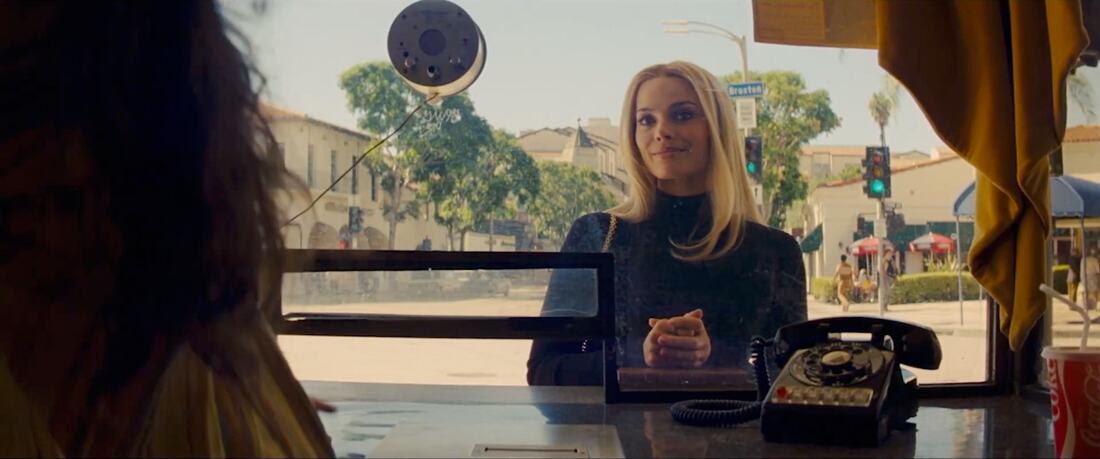
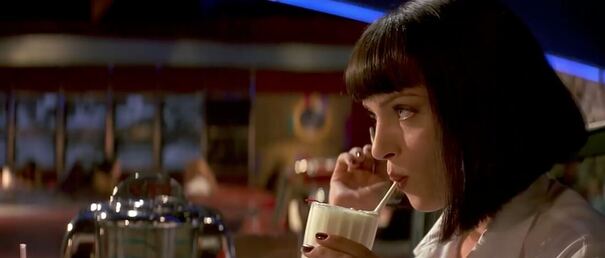
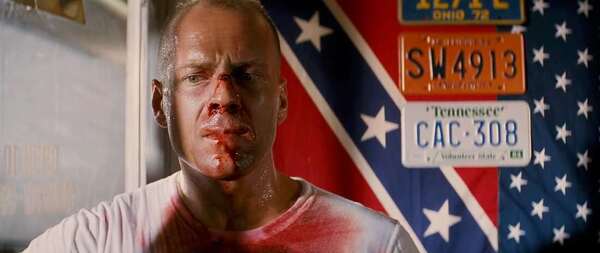
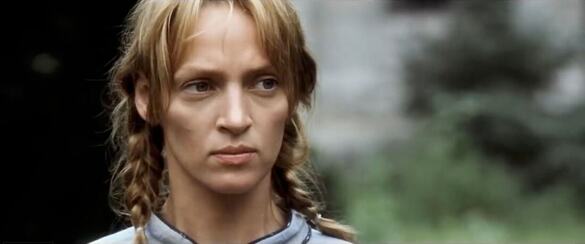
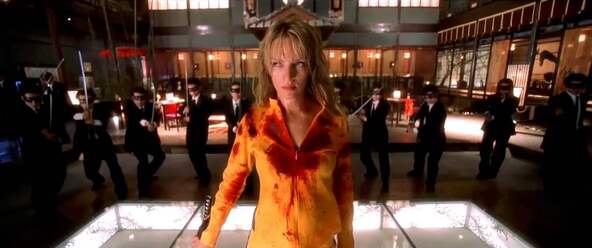
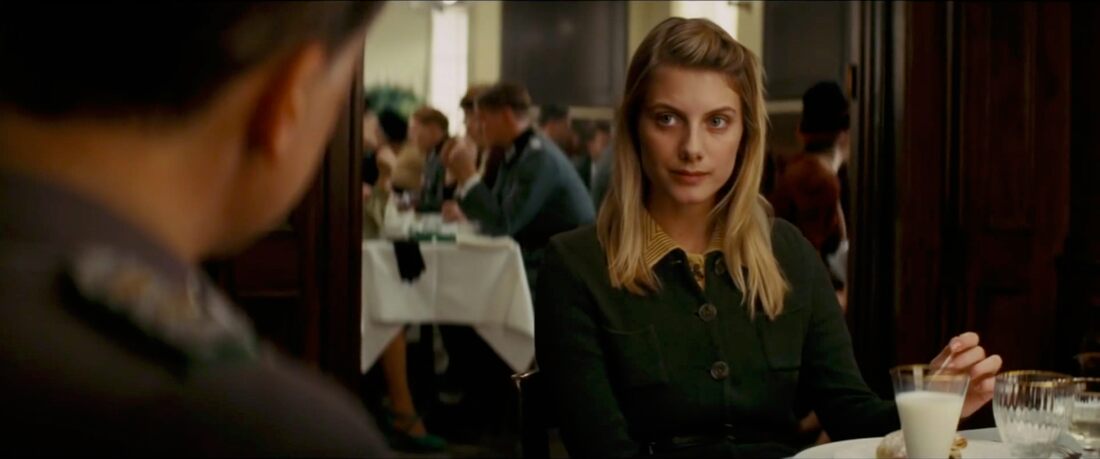
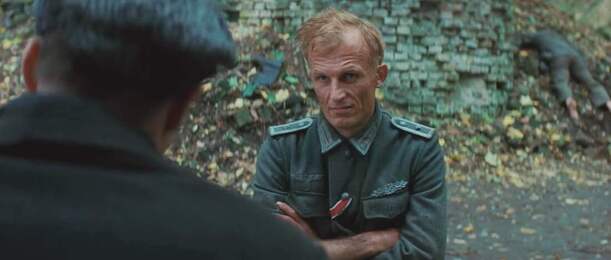
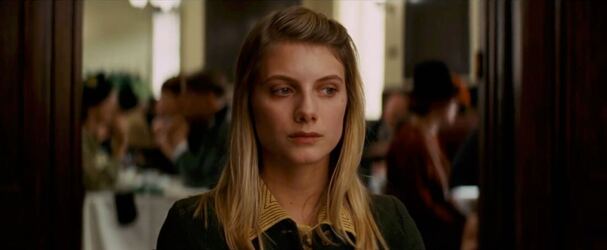
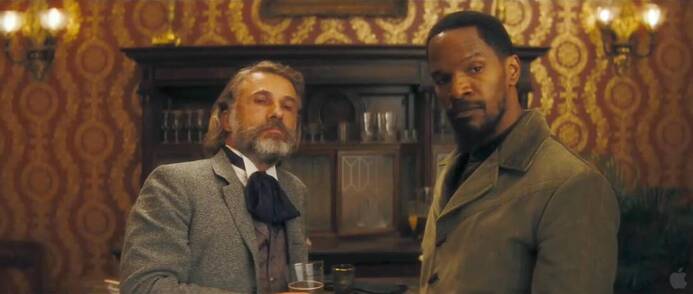
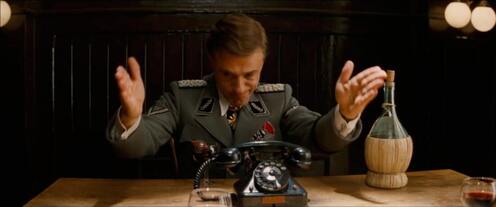
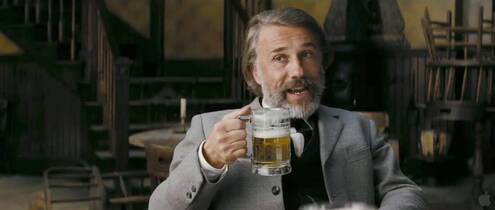
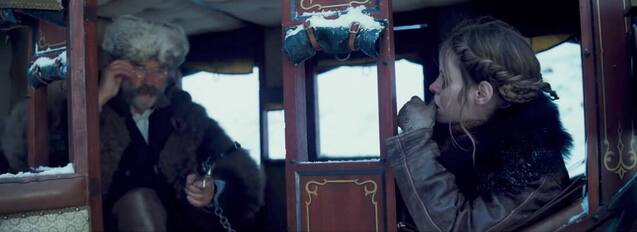
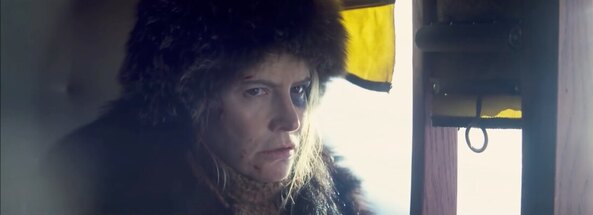
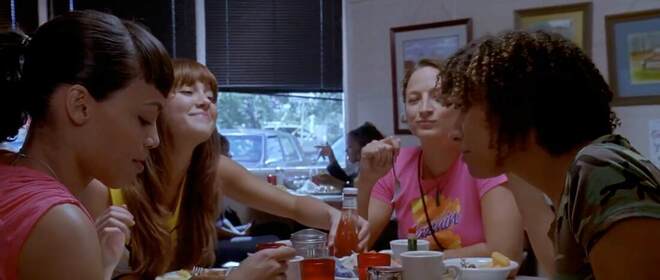
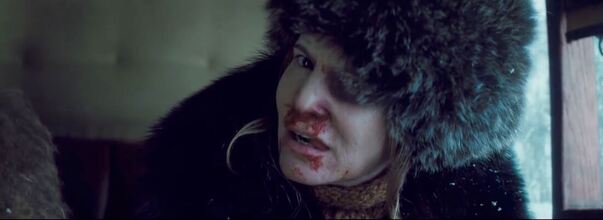
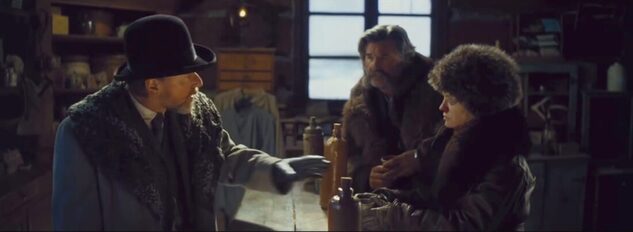
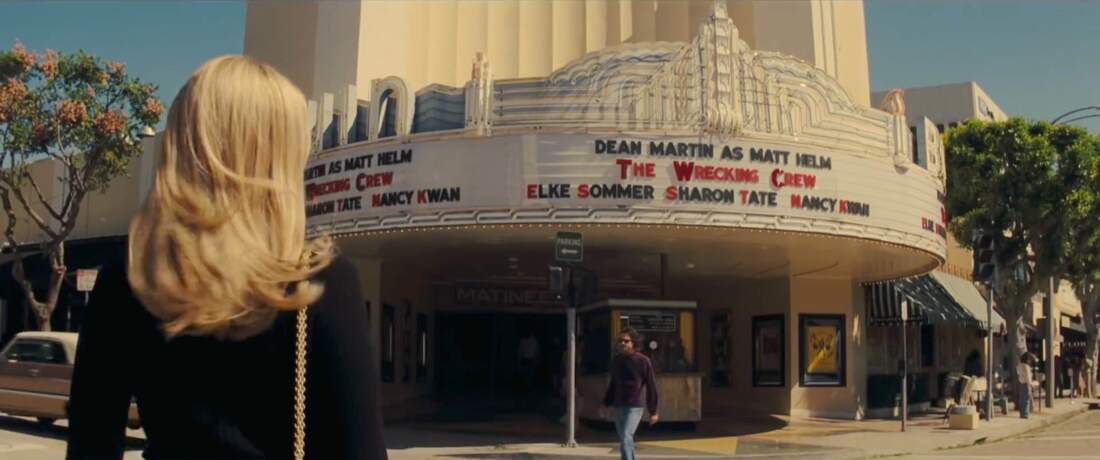
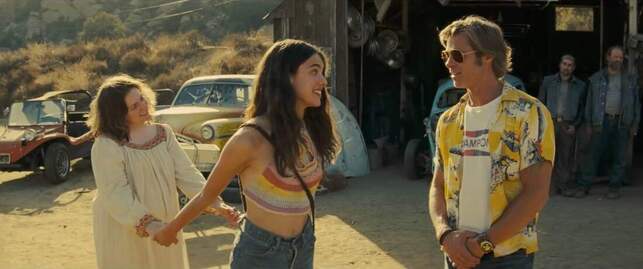
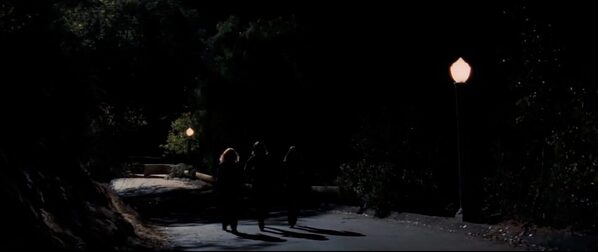
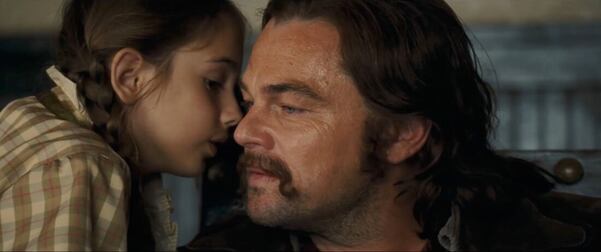
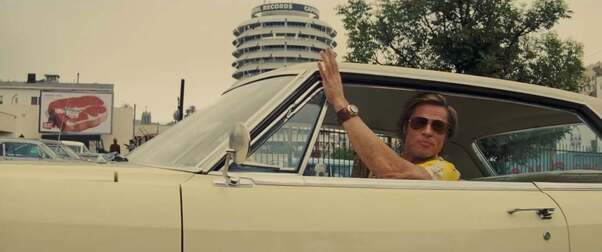
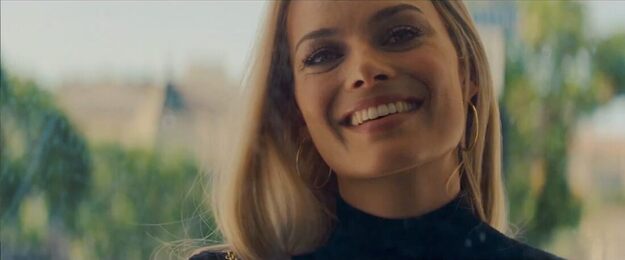
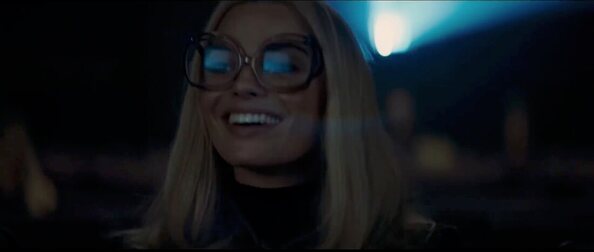
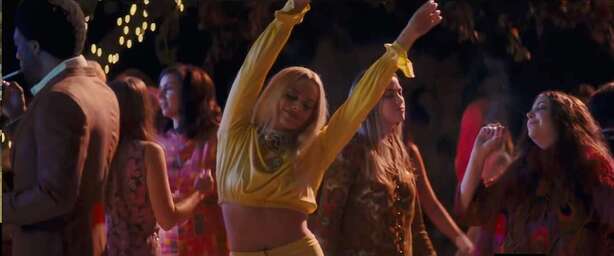
 RSS Feed
RSS Feed
